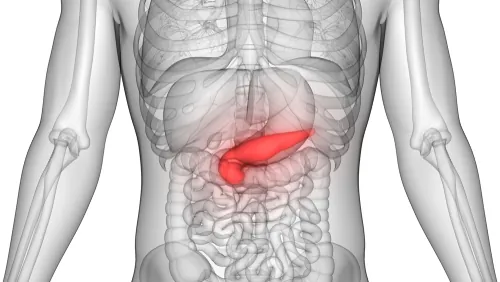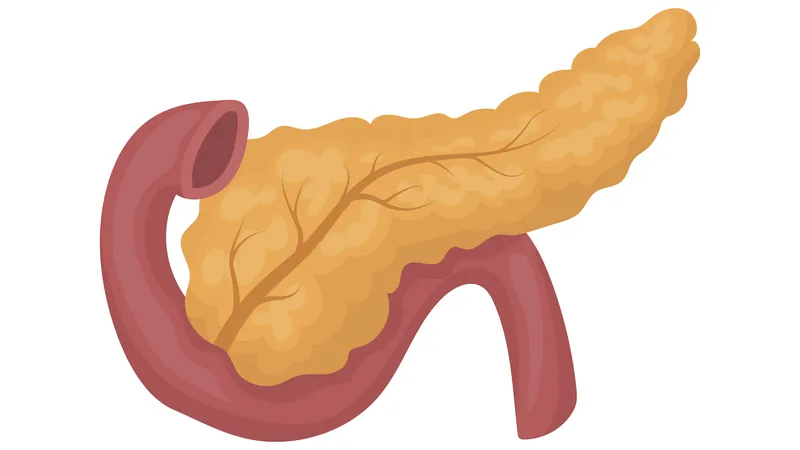What Is the Pancreas and What Does It Do?
We take a look at the pancreas in this article.
What does the pancreas do?
The pancreas primarily functions as an exocrine and endocrine gland. It has two main functions: digestion and regulation of blood sugar levels.
It supports digestion by excreting digestive enzymes into the small intestine to break down nutrients along with bicarbonate to neutralize acidity from the stomach. The pancreas produces systemic hormones, including insulin, glucagon, somatostatin, and pancreatic polypeptide. Insulin is of particular importance as it maintains blood glucose levels, therefore regulating the energy available to cells.
Interestingly, unlike many other vital organs, it is possible to live without a pancreas with the help of modern medicine. Patients can take digestive enzymes with their meals and inject insulin in order to compensate.
Where is the pancreas located?
 The pancreas is a small organ around six inches in length and is located in the abdomen. It has a flat shape and is surrounded by the stomach, small intestine, liver, spleen and gallbladder.
The pancreas is a small organ around six inches in length and is located in the abdomen. It has a flat shape and is surrounded by the stomach, small intestine, liver, spleen and gallbladder.
The widest end, which is on the right-hand side of the body, is known as the head of the pancreas. The middle sections are called the neck and body. The thin end of the pancreas is known as the tail.
The uncinate process is a hook-like part that extends from the lower part of the head of the pancreas. The superior mesenteric artery and superior mesenteric vein cross behind the neck of the pancreas and in front of the uncinate process.
The pancreas and diabetes
Type 1 diabetes, most commonly diagnosed between ages 4 and 14, is an autoimmune disease that attacks beta cells, which release insulin. Gallstones and chronic alcohol use can cause pancreatitis, an inflammatory disease occurring in the pancreas. Pancreatic tissue, like most of the tissues in the body, also significantly declines with age. Pancreatic cancer is very rare among the young (71 years of age for median diagnosis) and has one of the worst prognoses among cancers.
It is rarely detected early due to a lack of symptoms and biomarkers. Type 2 diabetes is marked by the inability to properly regulate blood glucose levels, which is caused by the decreased ability of pancreatic beta cells to secrete insulin as the rest of the body’s cells experience insulin resistance. Type 2 diabetes is of particular interest to the aging field, as it is an age-related disease that accelerates aging pathways.

